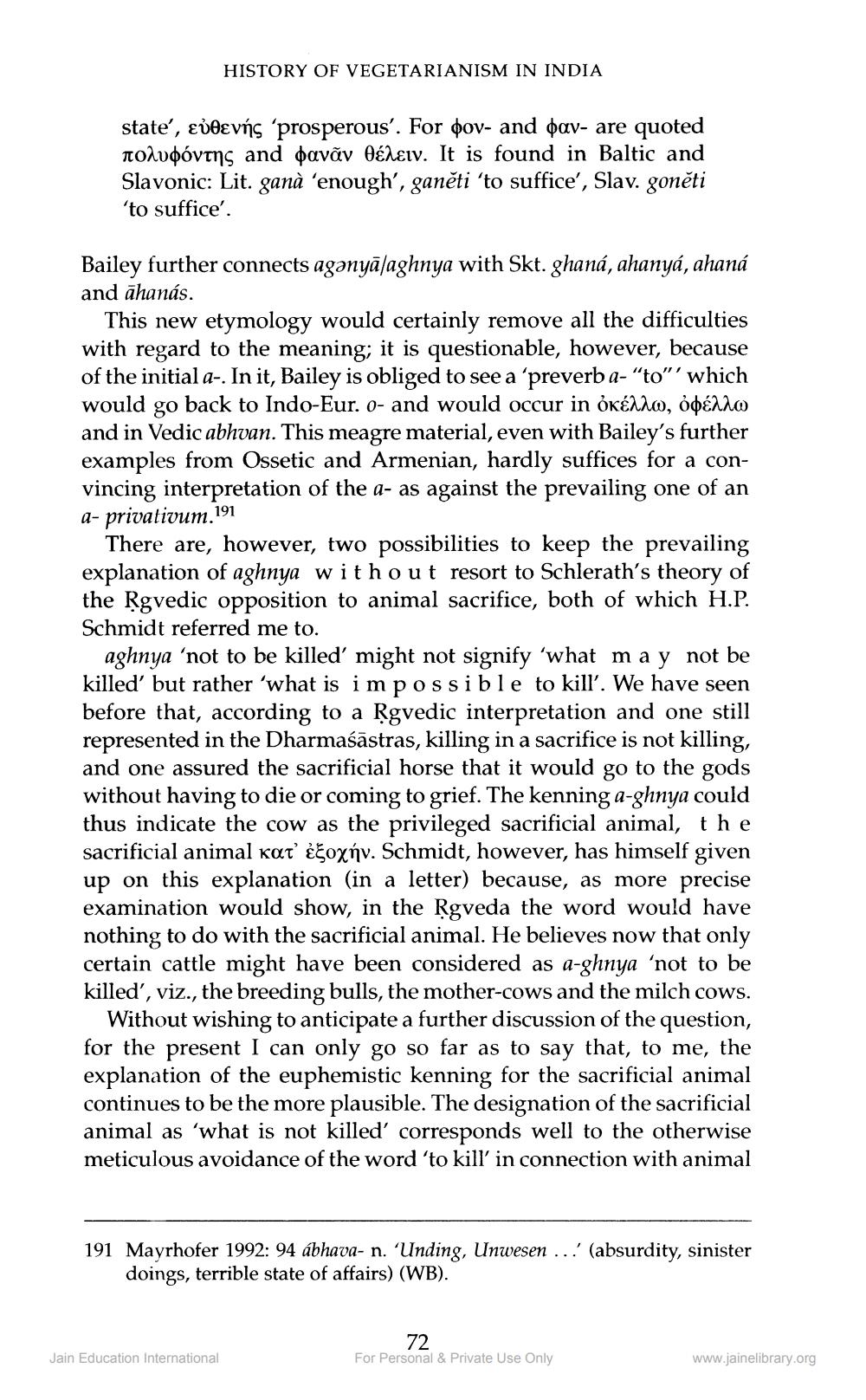________________
HISTORY OF VEGETARIANISM IN INDIA
state', £údevńs 'prosperous'. For pov- and pav- are quoted πολυφόντης and φανάν θέλειν. It is found in Baltic and Slavonic: Lit. ganà 'enough', ganěti 'to suffice', Slav. goněti 'to suffice'.
Bailey further connects agənyālaghnya with Skt. ghaná, ahanya, ahaná and āhanás.
This new etymology would certainly remove all the difficulties with regard to the meaning; it is questionable, however, because of the initial a-. In it, Bailey is obliged to see a 'preverb a-"to"' which would go back to Indo-Eur. 0- and would occur in ÓKÉNXw, o karo and in Vedic abhvan. This meagre material, even with Bailey's further examples from Ossetic and Armenian, hardly suffices for a convincing interpretation of the a- as against the prevailing one of an a- privativum.191
There are, however, two possibilities to keep the prevailing explanation of aghnya without resort to Schlerath's theory of the Rgvedic opposition to animal sacrifice, both of which H.P. Schmidt referred me to.
aghnya 'not to be killed' might not signify 'what may not be killed' but rather 'what is impossible to kill. We have seen before that, according to a Rgvedic interpretation and one still represented in the Dharmaśāstras, killing in a sacrifice is not killing, and one assured the sacrificial horse that it would go to the gods without having to die or coming to grief. The kenning a-ghnya could thus indicate the cow as the privileged sacrificial animal, the sacrificial animal cat' ćçoxnv. Schmidt, however, has himself given up on this explanation (in a letter) because, as more precise examination would show, in the Rgveda the word would have nothing to do with the sacrificial animal. He believes now that only certain cattle might have been considered as a-ghnya 'not to be killed”, viz., the breeding bulls, the mother-cows and the milch cows.
Without wishing to anticipate a further discussion of the question, for the present I can only go so far as to say that, to me, the explanation of the euphemistic kenning for the sacrificial animal continues to be the more plausible. The designation of the sacrificial animal as 'what is not killed corresponds well to the otherwise meticulous avoidance of the word 'to kill' in connection with animal
191 Mayrhofer 1992: 94 ábhava- n. 'Unding, Unwesen ... (absurdity, sinister
doings, terrible state of affairs) (WB).
72 For Personal & Private Use Only
Jain Education International
www.jainelibrary.org




